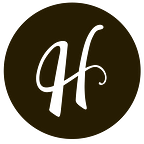By Dan Monheit, 29.10.21
Question submitted by Keanu, Woodend
Thanks for your question Keanu, and I’m glad you feel like my inbox is a safe and respectful space, even for batsh*t crazy questions like this one.
That said, I do wonder if maybe you’re on to something. In addition to cow milk, we do drink goat milk, sheep milk and camel milk. Hell, we’ve even taken to milking almonds, oats and cashews of late.
Looking a little deeper, it turns out that horse milk is rich in polyunsaturated fatty acids and whey protein, which means it’s good for our brain and even better for our muscles. Apparently, it’s quite tasty (in a horsey kind of way) too.
‘Woah Nelly!’ I hear you say. ‘Even if I did want a tall glass of delicious, refreshing horse milk, would there be enough to go around?’. Fear not, my city slicker friend. I’ve got you covered.
By my calculations (read: according to a quick Google search), there are about a million horses in Australia, which means there must be half a million lady horses (aka mare) kicking around. Balance that against the 2.5 million dairy cattle that call Australia home, and we should be sipping one horse latte for every five cow lattes we down at our local coffee shop.
Sure, there are some awkward, milking related logistics to get around and a well established dairy industry to go up against, but surely these are no match for the mighty, mighty horse?
Giddy up!
The Framing Effect
The Framing Effect refers to our tendency to interpret the same information differently, depending on how it’s presented to us.
In 1981, Tversky and Kahneman asked participants to decide between two different treatment options for a deadly disease that had infected 600 people. The options they were presented with were as follows:
Treatment A, which would save 200 lives
Treatment B, which had a 33% chance of saving everyone and a 66% chance of saving nobody.
Despite the odds (and therefore the outcomes) being exactly the same, 72% of people selected Option A. Who doesn’t want to be responsible for saving 200 lives?
Once you become aware of the framing effect, you’ll notice it working its magic everywhere. Instead of saying 16 million people need to be double vaxxed to open our borders, ScoMo and the gang gave us the seemingly more attainable goal of 80% of the eligible population.
96% fat free (vs 4% fat)? Framing effect.
Kills 99% of germs (vs 1% of germs will live happily ever after)? Framing effect.
Surgery with a 92% success rate (vs 2 in 25 patients die)? Framing effect.
Framing is also a big part of why our fridges remain a horse milk free zone. For as long as we can remember, cows have been framed as the gold standard for milk and milk related products. Horses, on the other hand, have been held up as the embodiment of beauty, performance, grace and power. It doesn’t matter how healthy or tasty the milk is, there’s just something weird about drinking from the teat of a Ferrari logo.
The bottom line: context matters far more than content.
For brands, it’s important to consider the context you’re being viewed in and shape your message accordingly. After all, the same product can just as easily be pitched as the healthiest snack in the confectionery aisle, or the tastiest snack in the health food aisle. Udderly ridiculous? Yes. But also very very true.
Behaviourally Yours,
PS If you missed the last edition, you can still check out why your to do list is never to done here.
Bad Decisions Podcast
Learn more about the Framing Effect on episode 16 of the Bad Decisions podcast.
Got a question?
Is there something you’ve always wondered about?
Send it through to AskDan@hardhat.com.au
Want more?
Register for Dan’s highly anticipated Behavioural Economics Masterclass with ADMA, starting November 16 here.
PS. for bookings of three or more contact us!
